
JAPANESE JOURNAL OF OPHTHALMOLOGY
Scope & Guideline
Illuminating the Future of Ophthalmic Research
Introduction
Aims and Scopes
- Clinical Research and Trials:
The journal publishes studies involving clinical trials, providing insights into the efficacy and safety of various ophthalmic treatments, including pharmacological interventions and surgical techniques. - Ocular Genetics and Disease Mechanisms:
Research on the genetic underpinnings of ocular diseases is a core area, with a focus on mutations prevalent in the Japanese population and their implications for treatment. - Innovative Diagnostic Techniques:
There is a strong emphasis on the development and validation of novel diagnostic tools and imaging techniques, such as optical coherence tomography and angiography, which enhance the understanding of ocular pathologies. - Epidemiology and Public Health:
The journal also addresses the epidemiological aspects of eye diseases, examining trends, risk factors, and the impact of ocular conditions on public health, particularly in Japan. - Surgical Techniques and Outcomes:
Papers documenting advancements in surgical techniques, their outcomes, and postoperative care are regularly featured, reflecting the journal’s commitment to improving clinical practices in ophthalmology. - Multidisciplinary Approaches to Eye Health:
The journal encourages research that integrates knowledge from various disciplines, including genetics, pharmacology, and public health, to promote a holistic approach to eye care.
Trending and Emerging
- Telemedicine and Remote Monitoring:
There is an increasing focus on the use of telemedicine and remote monitoring technologies, especially in the context of managing chronic eye conditions, driven by the need for accessible healthcare solutions. - Artificial Intelligence in Ophthalmology:
The integration of artificial intelligence for diagnostic and predictive purposes is gaining traction, with studies exploring its applications in retinal imaging and disease progression analysis. - Patient-Centered Outcomes and Quality of Life:
Research on patient-centered outcomes, including quality of life assessments and visual function, is becoming more prominent, emphasizing the importance of patient perspectives in ophthalmic care. - Innovations in Surgical Techniques:
There is a notable increase in studies focused on novel surgical techniques and their outcomes, particularly minimally invasive procedures, reflecting advancements in surgical technology. - Longitudinal and Cohort Studies:
Longitudinal studies that track patient outcomes over time are emerging, providing valuable insights into the long-term effects of treatments and the natural history of eye diseases.
Declining or Waning
- Traditional Pharmacological Treatments:
There has been a noticeable decline in studies focusing solely on traditional pharmacological treatments for common eye conditions, possibly due to the increasing interest in innovative therapies and personalized medicine. - Basic Science and Experimental Studies:
Research centered on basic science, such as animal models and laboratory-based experiments, appears to be waning in favor of more clinically relevant studies that directly impact patient care. - Generalized Epidemiological Studies:
While specific epidemiological studies remain relevant, broader studies lacking a focused approach or direct implications for clinical practice have seen reduced publication, reflecting a trend towards more targeted research.
Similar Journals
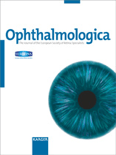
OPHTHALMOLOGICA
Elevating Ophthalmology with Cutting-Edge DiscoveriesOPHTHALMOLOGICA is a prestigious journal published by KARGER, dedicated to the dynamic field of ophthalmology and its interdisciplinary connections with medicine and sensory systems. With a rich history spanning over a century since its inception in 1899, this journal is esteemed for its high-quality research and impactful contributions, maintaining an impressive Q1 quartile ranking in both ophthalmology and miscellaneous medicine as of 2023, alongside a notable Q2 status in sensory systems. The journal's influence is reinforced by its Scopus rankings, where it ranks 26th out of 137 in ophthalmology, showcasing a strong percentile position of 81. Based in Basel, Switzerland, OPHTHALMOLOGICA serves as an essential platform for researchers, professionals, and students, providing essential insights, reviews, and studies that push the boundaries of knowledge in the vision sciences. Although it does not currently offer open access, its contributions are critical for those pursuing advancements in ocular health and related disciplines.
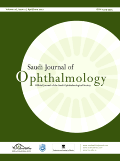
Saudi Journal of Ophthalmology
Connecting Knowledge: Uniting Global Experts in Visual HealthSaudi Journal of Ophthalmology, published by Wolters Kluwer Medknow Publications, stands as a crucial platform for the dissemination of innovative research and clinical practices in the field of ophthalmology. Since its inception in 2009, this journal has effectively contributed to the growing body of knowledge with a focus on addressing the diverse visual health challenges faced globally. With an ISSN of 1319-4534 and a E-ISSN of 2542-6680, the journal is indexed in Scopus, where it ranks in the Q3 category of ophthalmology, reflecting its commitment to quality research despite the competitive landscape. Situated in India, it provides a unique regional perspective while facilitating global discourse among researchers, practitioners, and students in ophthalmological sciences. Although it currently does not operate as an open-access journal, the Saudi Journal of Ophthalmology is essential for those aiming to expand their understanding of advancements in eye care, making it a valuable resource for professionals dedicated to enhancing patient outcomes through informed research and clinical practice.
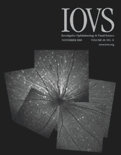
INVESTIGATIVE OPHTHALMOLOGY & VISUAL SCIENCE
Pioneering research for a clearer tomorrow.Investigative Ophthalmology & Visual Science (IOVS) is a leading academic journal published by the Association for Research in Vision and Ophthalmology, dedicated to advancing the field of ophthalmology and visual science. With an impressive impact factor and ranking in the Q1 category for both Ophthalmology and Sensory Systems, IOVS is well-respected for disseminating cutting-edge research and innovative discoveries. Established in 1977, this Open Access journal allows for broad accessibility to pioneering studies, fostering collaboration among researchers, clinicians, and students. The journal has consistently maintained high visibility in the academic community, evidenced by its robust rankings in Scopus, including Rank #16 in Ophthalmology. As it continues to pave the way for future developments in the understanding and treatment of ocular diseases, IOVS serves as an invaluable resource for those immersed in the complex field of visual science.

EUROPEAN JOURNAL OF OPHTHALMOLOGY
Transforming Vision Care with Cutting-edge StudiesThe EUROPEAN JOURNAL OF OPHTHALMOLOGY, published by SAGE PUBLICATIONS LTD, is a leading international journal in the field of ophthalmology, dedicated to advancing the understanding and treatment of ocular diseases and disorders. With an ISSN of 1120-6721 and an E-ISSN of 1724-6016, the journal aims to provide a platform for innovative research, critical reviews, and comprehensive studies that span the diverse aspects of the discipline. As part of its commitment to disseminating high-quality research, the journal is indexed in Scopus, achieving an impressive rank of #47 out of 137 in the Medicine - Ophthalmology category, indicating its strong impact within the academic community. With a current impact factor that places it in the Q2 quartile for both Medicine (miscellaneous) and Ophthalmology as of 2023, it offers researchers and practitioners access to important findings and developments in eye health. The journal's converged years from 1991 to 2024 exemplify its longstanding commitment to the field, making it an essential resource for anyone looking to stay at the forefront of ophthalmological research.

Augenheilkunde Up2date
Enhancing Expertise in Vision Science.Augenheilkunde Up2date is a pivotal journal in the field of ophthalmology, published by GEORG THIEME VERLAG KG, a renowned publisher known for its commitment to advancing medical knowledge. With its ISSN 1616-9719 and E-ISSN 1616-9735, this journal serves as a vital resource for researchers, professionals, and students interested in the latest developments and nuanced discussions in eye health. Although not available as open access, its curated content offers significant insights into contemporary research, clinical practices, and emerging trends in ophthalmology, thus promoting the continuous professional development of its readers. There is an emphasis on providing comprehensive reviews that encapsulate the pertinent advancements in the field, making it an essential publication for those aiming to enhance their expertise in eye care and vision science.
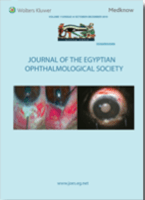
Journal of the Egyptian Ophthalmological Society
Elevating the standards of ophthalmological excellence.Journal of the Egyptian Ophthalmological Society is a premier academic journal dedicated to advancing the field of ophthalmology through high-quality peer-reviewed research. Published by Wolters Kluwer Medknow Publications, this journal plays a critical role in disseminating vital findings and innovations in eye care, fostering knowledge exchange among researchers, practitioners, and educators worldwide. Since its transformation to Open Access in 2014, it has significantly enhanced the accessibility of eye health information, thereby broadening its impact on the global scientific community. With an ISSN of 2090-0686 and an E-ISSN of 2314-6648, the journal aims to tackle contemporary issues in ophthalmology, including clinical practices, public health, and technological advancements in eye care. The journal's commitment to excellence ensures that it remains a vital resource for those looking to contribute meaningfully to this dynamic and crucial field.
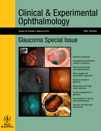
CLINICAL AND EXPERIMENTAL OPHTHALMOLOGY
Pioneering Discoveries for Visionary FuturesCLINICAL AND EXPERIMENTAL OPHTHALMOLOGY is a leading peer-reviewed journal published by Wiley, renowned for its commitment to advancing the field of ophthalmology. With an impressive impact factor reflecting its high-quality research contributions, this journal is ranked in the Q1 category both in Medicine (miscellaneous) and Ophthalmology, signifying its crucial role in shaping contemporary ophthalmic research. It boasts a remarkable position in the Scopus Ranks, standing at Rank #13 out of 137 in the field of Medicine and Ophthalmology, placing it within the 90th percentile among its peers. Having been in circulation since 1979, this journal encompasses a broad scope of topics that aim to disseminate groundbreaking findings and stimulate dialogue among researchers, clinicians, and students alike. It is easily accessible to a global audience, embodying the principles of open access, making valuable research available to all. For anyone seeking to stay at the forefront of ophthalmology, CLINICAL AND EXPERIMENTAL OPHTHALMOLOGY is an indispensable resource that fosters knowledge and innovation in the ever-evolving landscape of eye care.
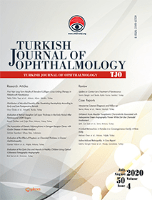
Turk Oftalmoloji Dergisi-Turkish Journal of Ophthalmology
Connecting Research and Clinical Practice in OphthalmologyTurk Oftalmoloji Dergisi - Turkish Journal of Ophthalmology is a premier peer-reviewed publication dedicated to the field of ophthalmology, published by GALENOS PUBL HOUSE. Since its inception in 1997, this Open Access journal has championed the dissemination of high-quality research, fostering an inclusive environment for sharing knowledge and advancements in eye health. With an ISSN of 1300-0659 and an E-ISSN of 2147-2661, the journal serves as a vital resource for researchers, clinicians, and students interested in the latest findings and innovations in ophthalmic sciences. Although its coverage in Scopus has been discontinued since 2017, the journal has garnered a significant rank of 80 out of 114 in the field of Medicine – Ophthalmology, highlighting its relevance and impact within the discipline. Operating out of Istanbul, Turkey, the Turkish Journal of Ophthalmology continues to be a crucial platform for ophthalmologists and researchers to publish their work and advance the understanding of ocular health.

INTERNATIONAL OPHTHALMOLOGY
Elevating Ophthalmic Knowledge Worldwide.International Ophthalmology is a prestigious journal published by Springer, dedicated to advancing the field of ophthalmology through the dissemination of high-quality research and clinical studies. With an ISSN of 0165-5701 and an E-ISSN of 1573-2630, this journal has been a vital resource since its inception in 1978, serving the global community of ophthalmologists, researchers, and healthcare professionals. The journal holds a significant Q2 ranking in the category of ophthalmology and has achieved a commendable position as #56 in Scopus's rankings, placing it within the top tier of its field. Although it does not offer open-access options, articles published in International Ophthalmology are widely cited and respected, playing a crucial role in the ongoing dialogue regarding contemporary ophthalmic practices and innovations. With a broad scope covering all aspects of eye care, this journal is essential for those aiming to keep abreast of the latest developments and research findings that shape the future of vision science and clinical practice.
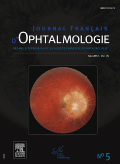
JOURNAL FRANCAIS D OPHTALMOLOGIE
Pioneering insights in ophthalmology for a clearer tomorrow.JOURNAL FRANCAIS D OPHTALMOLOGIE, published by MASSON EDITEUR, is a prominent peer-reviewed journal that serves as a vital resource in the field of ophthalmology. Launched in 1978, this esteemed publication continues to make significant contributions to the advancement of ocular health and vision science, with its scope encompassing clinical practices, innovative research, and the latest technological advancements in ophthalmic care. Based in France, the journal is recognized in the 2023 category quartiles with a Q3 ranking in ophthalmology, reflecting its dedication to quality scholarship within a competitive landscape, as evidenced by its positioning in the 30th percentile of the Scopus rankings. While it operates without Open Access, the journal remains crucial for professionals, researchers, and students alike, providing a platform for sharing knowledge and fostering collaborations in the global ophthalmological community.